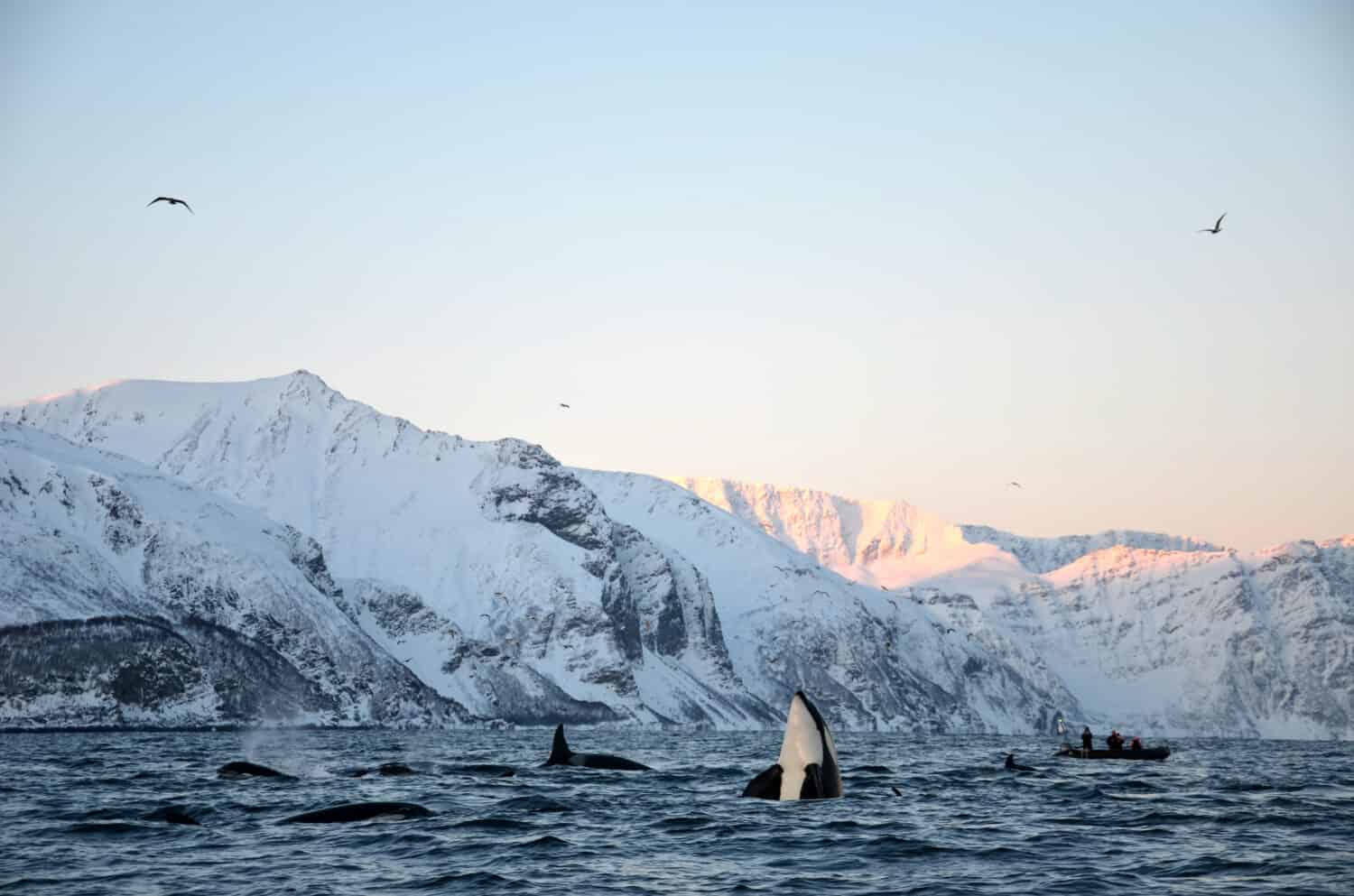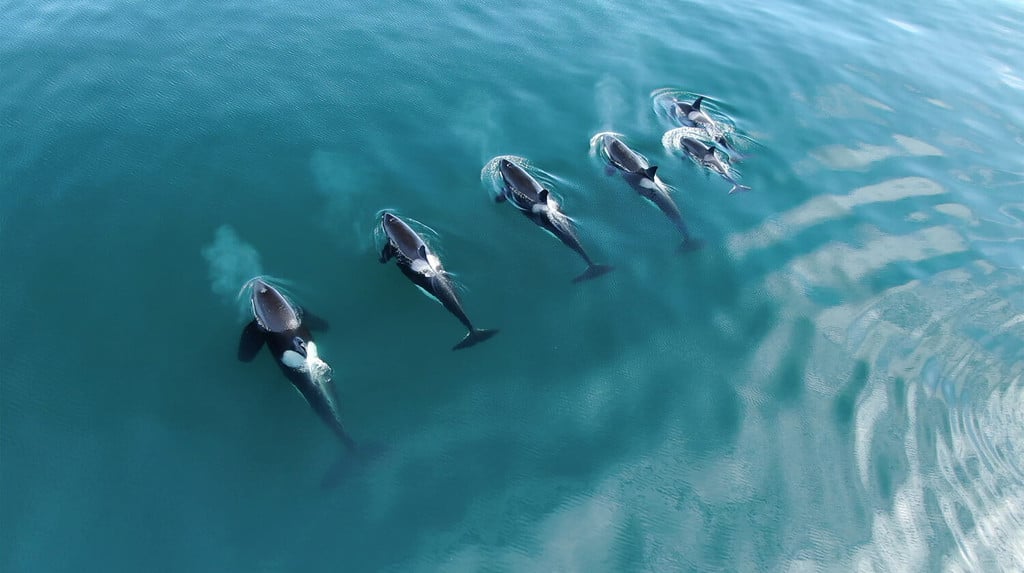Continue reading for our analysis...

Floating ice provides a perfect resting place for tired seals. They are safer from predators than they would be in the water – or so they think! Danger is lurking in the depths. Circling the ice floe is a highly intelligent predator who has figured out exactly how to reach the seal. You won’t want to miss the genius tactics that these orcas use to get their target prey into the water in the video above.
Orcas Work Together to Smash up Ice Floe
We were fascinated by the short YouTube clip at the top of this blog post. It captures the exact moment that a group (called a pod) of orcas spots a seal. Then, they develop their strategy for getting at it! The Beautiful People YouTube channel that shared the clip also shares other footage of animals being clever…and hilarious. There is footage of bison, zebras, and elephants.
Organized Orca Hunting Technique
This group of hunting orca comprises around four individuals. According to the US National Oceanic and Atmospheric Administration Fisheries Department, orcas (killer whales) are highly social animals that live in maternally related pods containing up to 20 animals or even more. Pod members communicate with each other using a series of clicks, whistles, and pulses. Also, the Washington State Recreation and Conservation Office explains how orcas use echolocation to find their prey.
The killer whales dive under the ice flow in synchrony, creating a wave that smashes it into bits. The seal has to scramble to stay on a tiny bit of ice but is not safe. With their next synchronized dive, the orcas flick the seal into the water.
How Can Orca Numbers Be Protected?

Some orca populations are threatened by lack of prey.
©Willyam Bradberry/Shutterstock.com
Several populations of orcas are under threat including the Southern Resident killer whales who live in the coastal ocean waters off Northern California, Oregon, Washington, and British Columbia.
The Oceana charity shares that these animals are threatened by vessel noise, water contamination, and a lack of available prey. This particular population relies on Chinook salmon rather than seals. Another charity, Whale and Dolphin Conservation, explains that different orca populations prefer different diets. For example, in the Northern Hemisphere, ‘resident orcas’ are fish specialists but ‘Bigg’s orcas’ eat mammals including harbor seals.
In the Southern Hemisphere, the ‘Type B (small)’ orcas are pack ice specialists. They forage for seals around the Antarctic continent. As we see in the clip at the top of this post, they are accomplished at cooperative wave-washing techniques that hurl seals off ice floes!
Thank you for reading! Have some feedback for us? Contact the AZ Animals editorial team.






